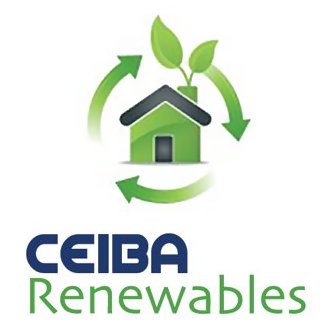The continuous push towards sustainability, coupled with the increasing demand for energy independence, has led many businesses to invest in renewable energy solutions, with solar photovoltaic (PV) and battery storage systems being among the most popular options.
Solar PV technology excels in generating clean energy, relying on sunlight to produce electricity, which can be directly used by your business or fed back into the grid. However, the intermittent nature of sunlight limits the sole use of solar PV in achieving energy self-sufficiency. Using battery storage that efficiently stores surplus solar-generated electricity for use during peak energy demand periods or when sunlight is insufficient helps overcome this problem.
While choosing solar PV as an independent solution provides significant benefits, integrating battery storage can unlock the full potential of your renewable energy setup. In this comprehensive article, we will explore the key aspects of utilising solar PV and battery storage systems to maximise the benefits for your business. We will discuss the energy savings and increased independence from the grid, as well as delve into the financial incentives, practical implementation considerations, and optimal system designs. By providing you with a reliable roadmap, Ceiba Renewables enables you to make the most of your investment in solar PV and battery storage.
As advocates for cleaner energy and reduced energy overheads, Ceiba Renewables are committed to assisting businesses in enhancing their green footprint while maximising energy savings.
Energy Cost Savings and Grid Independence
A crucial advantage of implementing both solar PV and battery storage systems in your business is the potential for substantial energy cost savings and increased grid independence:
Utilising Stored Energy: The integration of battery storage with solar PV allows your business to store excess energy generated during peak sunlight hours, which can be drawn upon during periods of high energy demand or limited solar generation. This capability makes it possible for your business to further reduce your energy bills by relying on stored solar energy instead of drawing from the grid.
Peak Demand Shaving: Businesses can strategically rely on stored solar energy to offset energy consumption during peak demand periods when grid electricity prices are higher. This practice, known as peak shaving, can result in additional cost savings and contribute to a more predictable energy budget for your business.
Enhanced Grid Independence: Combining solar PV and battery storage means that businesses can rely less on the grid, thereby reducing exposure to fluctuating energy prices. In cases of power outages, the combined system can also provide backup electricity, minimising downtimes and ensuring business continuity. Providing you have chosen a battery with Island Mode capability.
Financial Incentives for Solar PV and Battery Storage
Several government-backed financial incentives can further enhance the attractiveness of investing in renewable energy solutions, such as solar PV and battery storage systems:
Smart Export Guarantee (SEG): The SEG is a UK government initiative that replaces the Feed-in Tariffs (FiTs) scheme. The programme requires energy suppliers to offer tariffs that pay businesses for exported surplus solar energy, ultimately encouraging both generation and storage of renewable electricity.
Annual Investment Allowance (AIA): In the UK, businesses investing in renewable energy systems may be eligible for the AIA, which allows companies to claim tax relief on qualifying capital expenditure, including the purchase, installation, and other associated costs of renewable energy systems.
Implementation Considerations and System Design
To maximise the benefits of integrating solar PV and battery storage, it is essential to take a few critical factors into account during the implementation phase:
Energy Usage Evaluation: Carefully analyse your business’s energy needs and consumption patterns, including peak demand hours and seasonal fluctuations, to determine the optimal solar PV and battery storage system capacity and configuration for your specific requirements.
Site Assessment: Arrange for a professional site assessment to determine the most appropriate location, orientation, and design of solar panels, as well as an optimal location for battery storage. Factors to consider include potential shading, structural integrity of the roof or ground, and accessibility for installation and maintenance.
Selecting the Right Battery Storage System: When choosing a battery storage system, consider its capacity, charge and discharge rates, and estimated cycle life. Additionally, compares the energy storage efficiency of different battery technologies such as lithium-ion, lead-acid, and flow batteries.
Scalability and Smart Controls: Plan for potential future expansion of your solar PV and battery storage systems by ensuring that your chosen design allows for easy scalability. Integration with smart controls can enable automated load management, performance monitoring, and maximisation of self-consumed solar energy while seamlessly integrating with your existing building management system.
Long-Term Maintenance and Operational Efficiency
Optimising the long-term performance of your solar PV and battery storage systems should also be taken into account during the planning stage:
Monitoring and Performance Analysis: Implement a monitoring system to track the performance of your solar PV and battery storage, allowing you to identify areas for improvement and act quickly when the system requires maintenance inspections or service visits.
Employee Engagement: Encourage employees to become involved in energy-saving initiatives and educate them on how to maximise the benefits of your solar PV and battery storage systems through efficient energy use and conservation practices.
Conclusion
Incorporating solar PV and battery storage systems into your business offers multiple benefits, including financial savings, enhanced grid independence, and a reduced carbon footprint. By thoroughly evaluating your energy requirements, selecting the right system design, and prioritising long-term maintenance and operational efficiency, your business can unlock the full potential of this powerful renewable energy solution. Discover how Ceiba Renewables can help you make the most of battery storage systems and solar PV panels in Scotland to secure a more sustainable and successful future for your business. Contact us today to get started.

